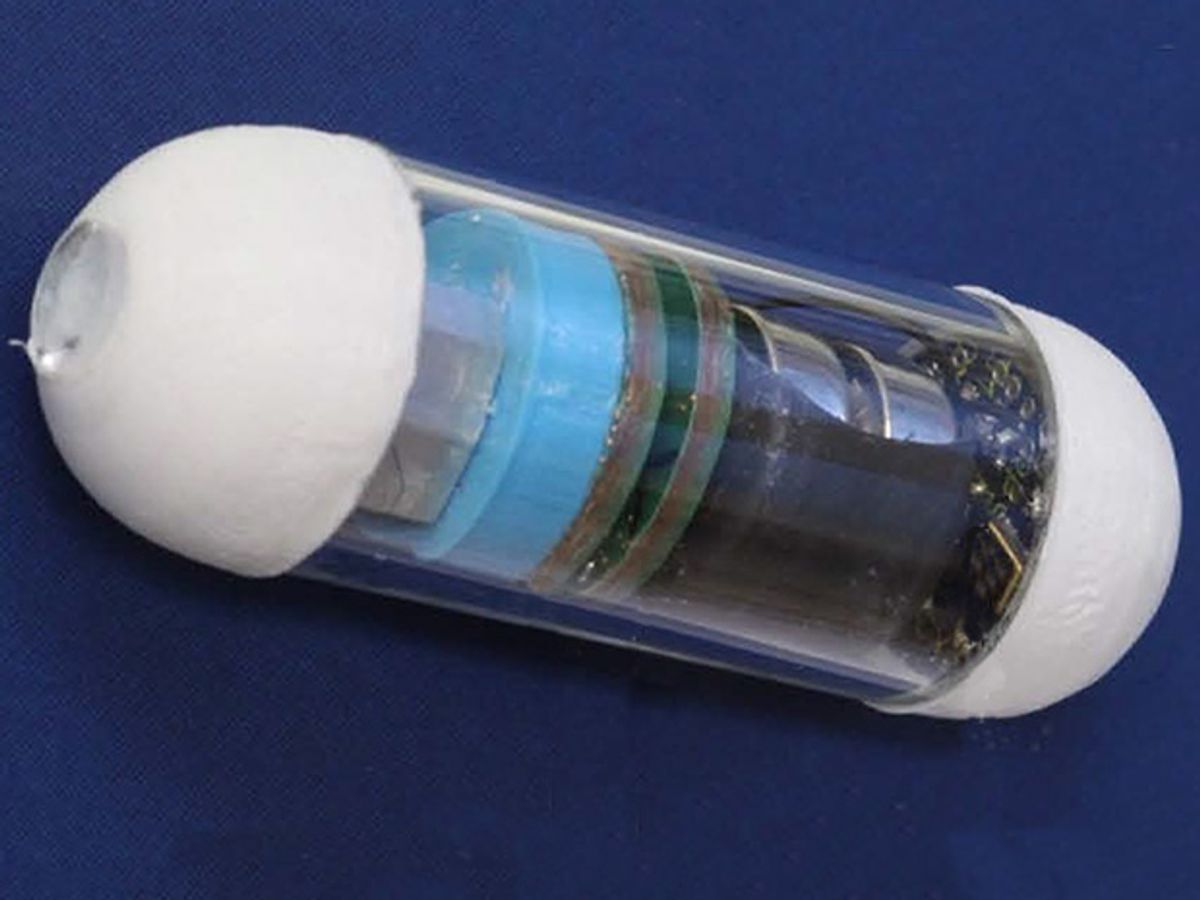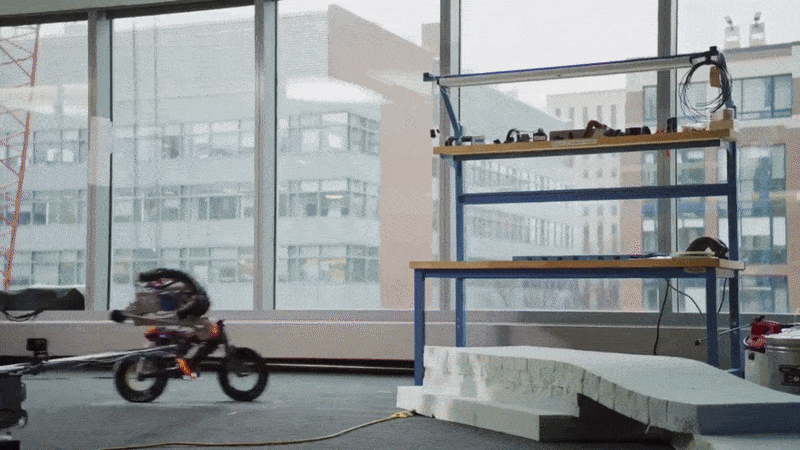A swallowable camera pill is the first to use fluorescent light to help detect cancer in the human throat or gut. The new device made by Scottish researchers could replace the clumsy endoscope “snake” cameras often used to check out a patient’s innards.
Existing camera pills rely upon visible light to illuminate the patient’s passages. The new camera pill takes a step farther with a wireless version of fluorescence endoscopy—a method of detecting certain molecules in human tissue that naturally give off green light after absorbing the energy of blue light. Such a method can help detect cancer in the intestines, bowel, and esophagus because cancerous tissue can have up to three times higher concentrations of such molecules.
“The system we’ve developed is small enough and power efficient enough to image the entire human gastrointestinal tract for up to 14 hours,” said Mohammed Al-Rawhani, an electrical engineer at the University of Glasgow in Scotland, in a press release.
So how did the researchers create a wireless version of fluorescence endoscopy that does not require an optical fiber snaking into a patient’s body? The key is a special sensor, called the single photon avalanche detector (SPAD), which (as the name implies) has the sensitivity to detect single light photons given off by the molecules in human tissue.
Such sensitivity allows the device to get away with having a cheap, compact light emitting diode (LED) that provides light power of just 78 microwatts at a wavelength of 468 nanometers. The full device is detailed in the 18 December 2015 issue of the journal Nature Scientific Reports.

Altogether, the tiny capsule consumes only 30.9 milliwatts of power in use and relies on just two 1.5-volt button cells for power. Such a low-power design enables the device to provide up to 14 hours of imaging and data transmission while inside the body.
Researchers ran two experiments to test their video pill’s capabilities. First, they showed that the device could detect light given off by “endogenous” molecules similar to the ones naturally found within both healthy and cancerous tissue. Second, they showed the device could also image “exogenous” molecules that come from outside the body and bind to certain tissue for the same fluorescence imaging purpose.
“There’s still some way to go before it will be ready for commercial production and clinical use, but we’re in early talks with industry to bring a product to market,” said David Cumming, an electrical engineer and chair of electronic systems at the University of Glasgow, in a statement. “We’re also interested in expanding the imaging capabilities of video-pill systems to new areas such as ultrasound in the near future.”
Such swallowable camera pills could become more energy efficient and widespread in the near future. A team at Vanderbilt University has created an open-source modular platform that allows researchers with limited expertise to build their own prototypes of medical capsule robots. And Carnegie Mellon University hopes to make biodegradable capsules and components of camera pills to make them safer for use inside humans.
Jeremy Hsu has been working as a science and technology journalist in New York City since 2008. He has written on subjects as diverse as supercomputing and wearable electronics for IEEE Spectrum. When he’s not trying to wrap his head around the latest quantum computing news for Spectrum, he also contributes to a variety of publications such as Scientific American, Discover, Popular Science, and others. He is a graduate of New York University’s Science, Health & Environmental Reporting Program.



